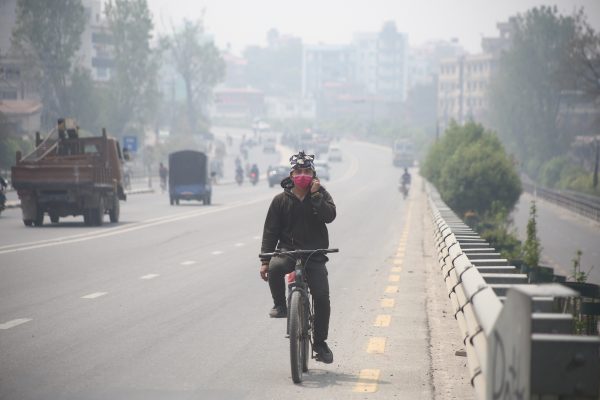Air pollution is the second highest risk factor for non-communicable diseases, including heart disease, stroke, lung cancer and acute respiratory diseases. Meeting the World Health Organization’s guidelines on fine particulate matter (PM2.5) — the air pollutants posing the greatest health threat — would increase an average person’s life expectancy by almost seven years in Lahore, ten years in Delhi, eight years in Dhaka and three years in Kathmandu. Given the massive population across the region, the aggregate gains in life expectancy would translate into substantial benefits over time.
The direct health consequences of poor air quality comprise a lower bar on its overall costs. Air pollution also causally relates to non-health effects such as lower worker productivity and school performance, owing to cognitive dysfunction. These effects have manifested in settings where air quality remains within mandated standards, suggesting that severely polluted regions such as South Asia could experience severe, enduring economy-wide consequences, with costs orders of magnitude higher than anticipated.
Data and research on the region’s air pollution sources remain particularly weak. Delineating sources and their contribution to overall emissions relies on source apportionment studies, which identify the sources of air pollution and the extent of their contribution. But there is a lack of source apportionment studies on the most acutely affected South Asian cities — an alarming negligence given that such studies comprise an important input in informing air quality management.
The sparse information that can be mustered list vehicular emissions as the main source of poor air quality. With rising incomes in the region, the share of vehicular ownership has steadily increased but the overall ownership rate remains low. A small share of vehicle owners significantly contributes to hazardous air quality, especially in cities where traffic congestion can compound pollution levels. Vehicular standards have also not evolved fast enough, leading to a large share of older, more polluting vehicles on roads.
Industrial and power plant emissions also contribute to air pollution. Steel, iron, cement, fertiliser, petrochemical and coal-based power plants, along with oil refineries, involve processes that produce pollutants such as PM2.5. International financing to address greenhouse gas emissions from industrial and energy sources — as part of international treaties such as the Paris Accords and through renewed vigour at the recent Conferences of Parties — provides a mechanism to achieve climate co-benefits in the form of reduced greenhouse gases and air pollutants.
Air pollution also spreads around the India–Pakistan border in Punjab during winter, when paddy farmers on both sides burn leftover stubble to prepare their land for the next cropping season. With farming wages rising, plausibly owing to labour shortages as workers flock to urban areas, stubble burning stands as a cheap alternative for clearing land. As a result, plumes of smoke blanket large swathes of the region. Though local governments in both countries have officially restricted the practice, they struggle to enforce the bans — perhaps policymakers find putting thousands of farmers in jail economically and politically infeasible.
Pollution flows across borders, making the question of responsibility difficult to answer. Transboundary pollution is a function of meteorological conditions. Pollution from crop burning primarily flows from Pakistan into India but could reverse direction. Similarly, many Bangladeshi cities suffer pollution originating in India. The transboundary nature of air pollution hampers local efforts, necessitating a multi-country air quality management plan.
The EU’s Convention on Long-Range Transboundary Air Pollution (CLRTAP) offers a precedent for successful intergovernmental cooperation in addressing transboundary air pollution. Under CLTRAP, the EU witnessed a 40–80 per cent reduction in several harmful pollutants. CLTRAP led the United States to sign agreements with both Canada and Mexico on jointly managing pollution in their common airsheds. South Asia requires a similar multilateral forum to share research and design policy on pollution. But given the persistent political friction between India and Pakistan, a joint forum on transboundary air pollution will remain a pipe dream for the foreseeable future.
South Asian countries experience severe air pollution despite having strong rules and regulations on paper. But these regulations operate within a weak institutional setting, inhibiting better air quality outcomes. Strengthening these institutions — potentially through larger budgets and external financing — would improve local governments’ capacities to monitor and enforce regulations.
Technology adoption also offers an important channel to ameliorate pollution. Replacing existing motor vehicles with electric vehicles would mitigate vehicular emissions. Continuous Emissions Monitoring Systems, which collect and relay emissions data from sources in real time, would support regulators in enforcing existing emission standards as well as lower the costs of implementing market-based strategies such as emission charges and tradable permit schemes.
Improving air quality in South Asia doesn’t entail quick fixes — the problem is complex and requires substantial policy actions. But a concerted effort to engage across countries, leverage international financing, strengthen institutional capacity and incentivise technology adoption may create the momentum to tackle the challenge head on.
Sanval Nasim is Assistant Professor of Economics at Colby College.

